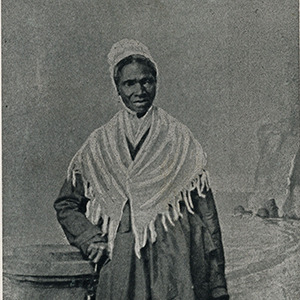Onondaga, Cortland, and Madison Counties Enslavement

Day 1: Africa
Students will analyze multiple sources including images, photographs, and artifacts through a zoom in zoom out activity and a 3-2-1 partner activity. Writing down what they notice, wonder, and infer, students can also draw on background knowledge they have about Africa. Students will begin to develop new questions and understanding about Africa. This analysis of sources is intended to broaden and perhaps complicate their understanding of Africa as they describe relationships between the sources and consider location, as well as the culture and traditions of Africa. This analysis will allow students to see the rich culture, history, development, and diversity all present in Africa, a perspective on the continent that is not always presented.
Download Resources:
Download Resources:

Day 2: Gallery Walk
Students will be introduced to the concept of enslavement through a short interactive video and a gallery walk. Students will view an interactive map depicting the scale of the Atlantic Slave trade when European countires and colonists expanded slavery by forcing Africans to come to the Americas. Students will participate in a gallery walk to explore the legacy and impact of enslavement on the United States, New York State, and Greater Syracuse. They will recognize that white people in NYS enslaved Black people for the purpose of making money. They will notice that many of our counties, cities, and towns are named for enslavers. They will recognize that the conditions of enslavement were inhumane and that Black people and their allies resisted the horrible conditions of enslavement. The lesson closes with the ‘why’ behind enslavement with a short video explaining how enslavers adopted and spread false beliefs about racial inferiority to justify the enslavement of Africans.
Download Resources:
Download Resources:

Day 3: Source Analysis
The teacher will go over the learning target, directions, and any new vocabulary. Students will be broken into two groups. Group 1 will have a copy of the primary source about Austin Steward and the corresponding superhero questions. Group 2 will have a copy of the primary source about Sojourner Truth and the corresponding superhero questions. Each group will read, analyze, and answer the superhero questions using each of the four roles. When both groups have completed the reading and questions, they will gather in a restorative academic circle and share observations and inferences about the question for the day “How did Black people resist the horrible conditions of enslavement?” The teacher will close with the quote by Maya Angelou.
Download Resources:
Download Resources:

Day 4: Jigsaw Source Sets Analysis
tudents will explore the ways Black people and their allies in New York and in Greater Syracuse resisted the horrible conditions of enslavement through a structured analysis of four sources. This activity is designed to help students practice their source-analysis skills and deepen their understanding of how European Colonists expanded slavery by forcing Africans to come to New York, that the main purpose of slavery was to make money for enslavers, and that in every time and place enslaved people sought freedom. They will also be encouraged to connect the jigsaw sources to the common source readings on Sojourner Truth and Austin Steward.
Download Resources:
Download Resources:

Day 5: Restorative Circle
Students will explore their thoughts and feelings about enslavement in New York State. Students will have the opportunity to share what they’ve learned throughout the week as well as questions they still have around enslavement. The purpose of this lesson is to create a safe space for students to explore, express and process their feelings. The lesson closes with students being invited to choose a voluntary civic action project focused on a problem they see in their community.
Download Resources:
Download Resources: